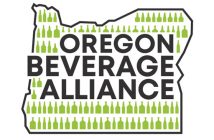There are a number of accreditations that trauma cleaning companies can achieve in the UK.
The National Academy of Crime Scene Cleaners (NACSC) is the primary accreditation body for the industry and provides certification for individuals and companies who meet their standards. The International Organisation for Standardisation (ISO) also has a standard for trauma scene cleaners.
Here’s an overview of the most common types of training required to effectively complete a trauma clean in the UK.
Bloodborne pathogen training
What is Bloodborne pathogen training?
Borne pathogen training is a program that teaches workers how to protect themselves from diseases that are carried in blood or other bodily fluids such as saliva or urine. The training is important because it can help prevent the spread of these diseases in the workplace. Bloodborne pathogens are serious illnesses that can cause death in some cases, so it is crucial that workers know how to protect themselves from exposure.
There are many different bloodborne pathogens that can be transmitted in the workplace, including HIV, hepatitis B, and hepatitis C. Bloodborne pathogen training teaches workers how to identify these diseases, how to prevent exposure, and what to do if they are exposed.
The training also includes information on how to properly dispose of medical waste and contaminated materials.
This type of training is important for people who work with death scene clean ups, trauma scene cleanups and crime scene cleaning as well as those in the healthcare professions who are interacting with patients or in other situations where they may be exposed to these types of pathogens. Bloodborne pathogen training can help workers learn how to avoid contact with blood and other potentially infectious materials, how to properly clean and disinfect any surfaces or equipment that may have come in contact with blood, and what to do in the event of an accidental exposure. Bloodborne pathogen training is important for protecting both the worker and the general public from potential harm.
Personal protective equipment (PPE) training
What is Personal protective equipment (PPE) training?
PPE training is a type of safety training that teaches employees how to safely use personal protective equipment. This type of training can include instruction on how to select the right PPE for the task at hand, how to properly fit and wear PPE, and how to safely store and maintain PPE.
Common types of PPE used in the workplace include gloves, goggles, face shields, earplugs, and masks. Each type of PPE has its own specific uses and benefits. For example, gloves protect hands from contact with hazardous materials, goggles protect eyes from chemical splashes, and masks protect respiratory passages from dust and other particles.
It is important to note that not all types of PPE are suitable for every workplace. Employers should carefully select the types of PPE that will be most effective in protecting employees from specific hazards.
PPE training is required in many workplaces, and it is important for employees to receive adequate training on how to safely use PPE. In addition to wearing PPE correctly, employees should also be aware of the limitations of PPE and understand when it is necessary to, and how to, remove PPE in order to avoid exposure to hazardous materials.
Respiratory protection training
What is Respiratory protection training?
Respiratory protection training is the instruction and practice necessary to ensure that employees can safely use respiratory protective devices. Respiratory protective devices include respirators, SCBA, and APR. Respiratory protection training must include both classroom and hands-on instruction.
When should Respiratory protection be used? Respiratory protection should be used when employees are exposed to respiratory hazards. Respiratory hazards can include, but are not limited to, particulates, gases, vapours, and fumes.
What are the different types of Respiratory protection?
There are three types of respiratory protection: respirators, SCBA, and APR.
Respirators are devices that protect the user’s lungs from inhaling harmful substances. Respirators can be either loose-fitting or tight-fitting. Loose-fitting respirators do not seal tightly against the face, while tight-fitting respirators do.
SCBA are self-contained breathing apparatuses that provide respiratory protection for the user. SCBA include a supply of air, typically from a compressed gas cylinder, and an inhalation valve that allows the user to breathe the air from the cylinder.
APR are airline respirators that provide respiratory protection by supplying air from a remote source. APRs include a hose that connects the respirator to the remote source of air.
How is Respiratory protection training given?
Respiratory protection training must include both classroom and hands-on instruction. Classroom instruction should cover the principles of respiratory protection, how to select the appropriate respirator for the task, how to use the respirator, and the limitations of respiratory protective devices. Hands-on instruction should include putting on and taking off respiratory protective devices, adjusting the devices to ensure a good fit, and using the devices in a simulated work environment.
Hazardous communication training
What is Hazardous communication training?
Hazardous communication training is a type of safety training that helps employees learn how to safely communicate with each other in order to avoid potential workplace accidents. This type of training can help employees identify potential hazards before they become a problem, and teaches them how to properly communicate about these hazards with their coworkers. Hazardous communication training is an important part of any workplace safety program, and can help employees stay safe while they are on the job.
If you are looking for a Hazardous communication training course, there are a number of options available to you. Most safety training providers offer this type of training, and many companies also offer their own internal Hazardous communication training courses. When choosing a Hazardous communication training course, be sure to select one that is tailored to your specific workplace. The course should cover all of the hazards that are present in your workplace, and it should also include information on how to safely communicate about these hazards.
Medical waste handling and transporting training
What is Medical waste handling and transporting training?
Medical waste handling and transporting training is a type of occupational safety and health training that teaches employees how to safely handle and transport medical waste. Medical waste can be dangerous if not handled correctly, so it is important that employees receive adequate training on how to safely handle and transport it.
Medical waste can include things like blood and other body fluids, sharps (like needles and scalpels), and chemotherapy drugs. It is important to handle and transport medical waste according to specific safety guidelines in order to avoid exposing employees to potential hazards.
Medical waste handling and transporting training teaches employees how to safely:
- Handle medical waste
- Transport medical waste
- Dispose of medical waste
- Recognise medical waste hazards
Employees who receive medical waste handling and transporting training are better equipped to safely handle and transport medical waste, which helps ensure the safety of both employees and the public. Medical waste handling and transporting training is an important part of ensuring a safe workplace.
Heat-illness awareness training
What is Heat-illness awareness training?
Heat-illness awareness training is a health and safety program that educates workers about the dangers of heat exposure and how to prevent heat-related illnesses. The program typically includes information on the types of heat-related illnesses, risk factors, symptoms, and preventive measures.
Heat-illness awareness training is important for workers who are exposed to high temperatures, such as those who work outdoors, in hot environments or where they are required to wear Personal Protective Equipment (PPE). Workers who are not properly trained may not recognise the signs and symptoms of heat-related illnesses, which can lead to serious health problems.
Heat-illness awareness training should be tailored to the specific workplace and should include information on how to dress appropriately for the weather, how to drink enough fluids, and how to take breaks in a cool environment.




